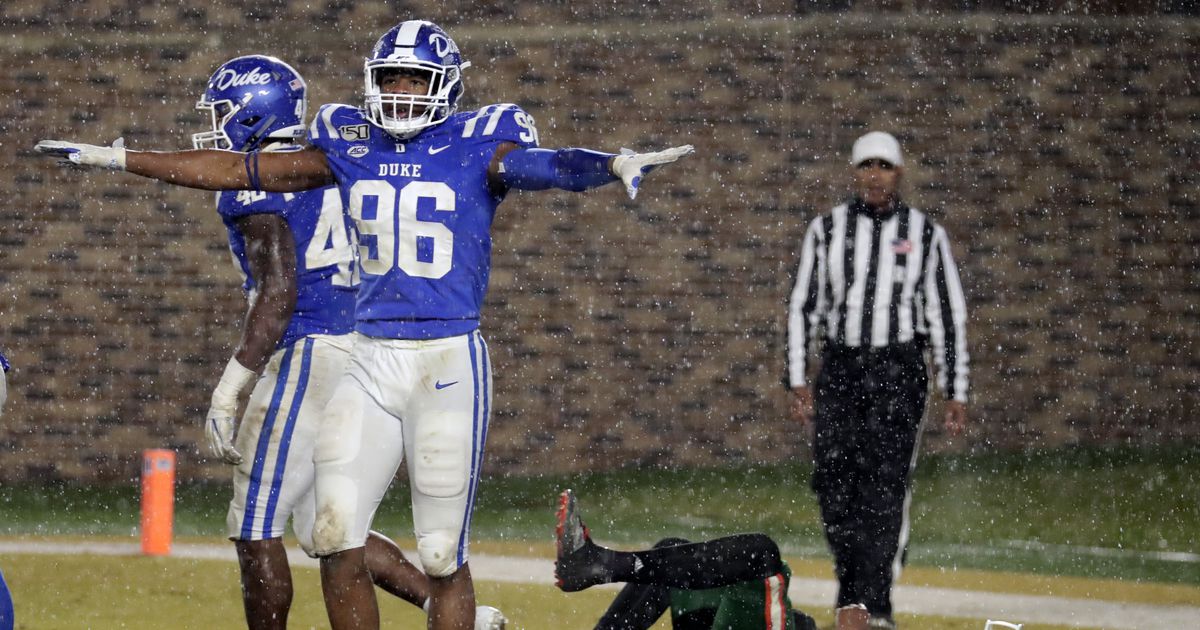The menu: College athletes get cooking classes, grocery tips


Nevada offensive lineman Nate Brown is doing his best to eat right, like many football players and other college athletes scattered around the country without access to training facilities amid the coronavirus pandemic.
The 6-foot-4, 300-pound rising senior has stumbled a few times in college sports’ version of Weight Watchers, with no in-person classes or spring practices.
“Maybe I would get Taco Bell because I do like Taco Bell,” Brown said. “Or maybe I’ll have ice cream later at night. … The meals that are maybe not super-nutritious, I’ve been trying to keep that to one a day.”
Athletes have been displaced from facilities with well-stocked training tables and easy access to healthy snacks and protein shakes. Some are home with family members, while others are largely on their own in off-campus residences.
To help them, schools have provided care packages, grocery tips, recipes and even cooking demonstrations on social media. And nutritionists or dietitians at schools — there are 96 with at least one on staff, according to the College and Professional Sports Dietitians Association, with roughly two-thirds in the Power Five conferences — have consulted with athletes from afar.
The challenge is keeping athletes — already engaged in makeshift workout regimens — on track when it comes to adding strength or avoiding unwanted pounds, even as it remains unclear when they can return to campuses or whether they’ll play this fall as the country tries to reopen.
“For some of them, it’s really good that they’re home, because they do have someone that’s still making home-cooked meals for them,” said Rachel Lukowski, Iowa State’s director of sports nutrition for football. “And some don’t have that, so it’s a matter of, ‘OK, here’s how we can help you out here’ or ‘What can we do?’”
Nebraska has offered curbside-pickup meals for athletes near campus and Memphis sent 225 care packages containing items such as snacks and protective masks to its athletes in mid-April.
Lukowski said Iowa State’s care packages included protein powder along with bottles allowing athletes to mix their own shakes without a blender, as well as grocery lists with tips for shopping for healthy foods on a budget and what to stash in the pantry. The school also posted cooking tips and recipes such as chicken dishes, egg muffins and pancakes, among others.
Oregon State sports dietitian Toni Langhans has tried similar steps with the school’s “Quarantine Kitchen Series” on Instagram. She wants athletes to feel comfortable in the kitchen by making dishes such as overnight oatmeal, stuffed peppers, black bean burgers or homemade hummus instead of ordering daily takeout meals.
“It’s such a big important skill to work on that really affects the athlete’s overall relationship with food, and what they’re going to eat when they come back also,” Langhans said. “So that’s what we’re trying to push for in doing these demos and trying to give people recipes — something that’s easy to look at and say, ‘OK yeah, I think I can do that.’ … Sometimes quality food can take three minutes.”
Things have gone smoothly so far for Duke defensive end Chris Rumph II. He’s trying to strengthen his 6-3 frame while living with his parents in Knoxville, Tennessee, and has picked up 6 pounds (233) thanks largely to his mother’s cooking.
“We haven’t even left the house, so all I’m getting is home-cooked meals, protein and all that kind of stuff,” said Rumph, son of an assistant coach with the NFL’s Houston Texans. “So there’s no fast food. I haven’t had fast food in I think two months now.”
Washington State offensive lineman Liam Ryan is staying in a house near the Pullman campus with roommates. They’ve been grilling so much steak, chicken, pork chops and salmon that they recently ran out of propane and had to get more.
The 6-5, 300-pound Ryan has focused on eating vegetables, brown rice and snacks like beef jerky or nuts. He’s also been checking the scales to ensure he’s staying near his playing weight.
“I think you just have to stay persistent on what you do because if you’re kind of just slacking and you miss a meal or you don’t work out — I mean, that’s what they do at the next level,” Ryan said. “At the NFL, the offseason’s kind of by yourself. So you get a little taste of it right now.”
Still, it’s hard to fight every craving for athletes removed from the hour-filling campus routines of weight training, practices and study hall. Ryan had a strong one for Chips Ahoy cookies, so he picked up multiple packages, then threw several cookies in a bowl with milk as though eating cereal.
“O-lineman stuff, right there,” he quipped.
Back at Nevada, Brown understands that challenge. He views it all as a test of “practicing self-control” when choosing what to bring home from the grocery store or picking up takeout from restaurants.
And yes, he has succumbed to the junk-food temptation. But when he has, he makes sure the next meal is a better one.
“At some point everybody’s going to come back,” Brown said. “I think the athletes that were able to eat well and really take care of their nutrition are going to be some of the athletes in better shape and be able to perform better. That’s really what it comes down to.”






